
Oaxaca: The Heartbeat of Culture and Color in Mexico
Discover Oaxaca, Mexico's vibrant city of culture, color, and culinary delights, where ancient history meets modern charm amidst stunning landscapes and welcoming locals.
Oaxaca, a city nestled in the southern part of Mexico, is a treasure trove of vibrant culture, ancient history, and breathtaking landscapes. Known for its rich indigenous heritage, Oaxaca offers a unique blend of the old and the new, where traditional customs coexist with modern life. The city's colonial architecture, colorful markets, and artisan crafts make it a feast for the senses. Walking through Oaxaca's streets, tourists will encounter bustling markets filled with handmade textiles, intricate pottery, and delicious local foods. The Zócalo, the city's main square, is a hub of activity where visitors can enjoy street performances, taste traditional Oaxacan cuisine, and soak in the lively atmosphere. The city's culinary scene is world-renowned, especially for its mole sauces and tlayudas, a kind of Oaxacan pizza. Oaxaca is also home to many ancient ruins and historical sites. The nearby Monte Albán, a UNESCO World Heritage Site, offers breathtaking views and a glimpse into the region's pre-Columbian history. The city's many museums, including the Museum of Oaxacan Cultures, provide deeper insights into the rich tapestry of local history and traditions. For nature lovers, the surrounding valleys and mountains offer opportunities for hiking, exploring, and enjoying the stunning natural beauty. Whether you are an adventure seeker, a history buff, or a food lover, Oaxaca has something to offer. Its warm, welcoming people and vibrant culture make it an unforgettable destination that will leave you wanting to return again and again.
Local tips in Oaxaca
- Visit the local markets early in the morning to experience the freshest produce and a lively atmosphere.
- Try the traditional Oaxacan drink, mezcal, and visit a local distillery to learn about its production.
- Wear comfortable shoes, as the city's cobblestone streets are best explored on foot.
- Don't miss the Guelaguetza festival if you visit in July, a celebration of Oaxacan culture with music, dance, and traditional costumes.
- Take a day trip to the Hierve el Agua, natural rock formations and mineral springs, for a unique outdoor experience.
Neighbourhoods in Oaxaca
Oaxaca: The Heartbeat of Culture and Color in Mexico
Oaxaca, a city nestled in the southern part of Mexico, is a treasure trove of vibrant culture, ancient history, and breathtaking landscapes. Known for its rich indigenous heritage, Oaxaca offers a unique blend of the old and the new, where traditional customs coexist with modern life. The city's colonial architecture, colorful markets, and artisan crafts make it a feast for the senses. Walking through Oaxaca's streets, tourists will encounter bustling markets filled with handmade textiles, intricate pottery, and delicious local foods. The Zócalo, the city's main square, is a hub of activity where visitors can enjoy street performances, taste traditional Oaxacan cuisine, and soak in the lively atmosphere. The city's culinary scene is world-renowned, especially for its mole sauces and tlayudas, a kind of Oaxacan pizza. Oaxaca is also home to many ancient ruins and historical sites. The nearby Monte Albán, a UNESCO World Heritage Site, offers breathtaking views and a glimpse into the region's pre-Columbian history. The city's many museums, including the Museum of Oaxacan Cultures, provide deeper insights into the rich tapestry of local history and traditions. For nature lovers, the surrounding valleys and mountains offer opportunities for hiking, exploring, and enjoying the stunning natural beauty. Whether you are an adventure seeker, a history buff, or a food lover, Oaxaca has something to offer. Its warm, welcoming people and vibrant culture make it an unforgettable destination that will leave you wanting to return again and again.
When is the best time to go to Oaxaca?
Iconic landmarks you can’t miss
Zócalo (Plaza de la Constitución)
Discover the vibrant culture and historic charm of Zócalo, the heart of Oaxaca, where tradition meets modernity in a breathtaking setting.

Mercado 20 de Noviembre
Experience the essence of Oaxacan cuisine at Mercado 20 de Noviembre, where fresh flavors and vibrant culture come together in a bustling market atmosphere.

Mercado Benito Juárez
Experience the vibrant flavors and rich culture of Oaxaca at Mercado Benito Juárez, a must-visit fresh food market and local attraction.

Zona Arqueológica de Monte Albán
Discover the ancient wonders of Monte Albán, where history, culture, and breathtaking views await in Oaxaca, Mexico.

Templo de Santo Domingo de Guzmán
Explore the breathtaking Templo de Santo Domingo de Guzmán, a Baroque architectural marvel that reveals the rich cultural history of Oaxaca.

Plaza de la Danza
Discover the cultural heart of Oaxaca at Plaza de la Danza, a vibrant park filled with history, art, and local festivities.

Jardín Etnobotánico de Oaxaca
Explore the diverse plant life and cultural heritage at the stunning Jardín Etnobotánico de Oaxaca, a serene oasis in the heart of the city.
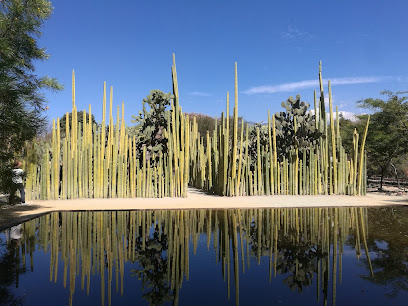
EX CONVENTO CUILAPAM DE GUERRERO
Discover the rich history and stunning architecture of Ex Convento Cuilapam de Guerrero, a must-visit landmark in Oaxaca, Mexico.
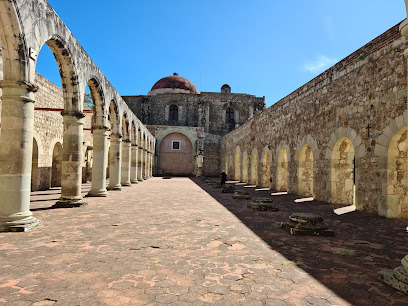
Basílica de Nuestra Señora de la Soledad
Explore the breathtaking Basilica de Nuestra Señora de la Soledad, a spiritual and architectural wonder in the heart of Oaxaca, Mexico.

Fuente de las 8 Regiones
Explore the enchanting Fuente de las 8 Regiones in Oaxaca, a stunning fountain symbolizing the rich cultural tapestry of this vibrant city.

Metropolitan Cathedral of Oaxaca
Explore the breathtaking beauty and rich history of the Metropolitan Cathedral of Oaxaca, a stunning blend of Baroque architecture and cultural heritage.

Andador Turístico
Discover the vibrant charm of Andador Turístico, Oaxaca's premier promenade filled with culture, cuisine, and captivating history.

TEATRO MACEDONIO ALCALÁ
Experience the rich cultural heritage of Oaxaca at the stunning Teatro Macedonio Alcalá, a historic theater showcasing vibrant performances.

Museum of Cultures of Oaxaca, Santo Domingo
Explore the Museum of Cultures of Oaxaca for an unforgettable journey through Oaxaca's rich history, art, and traditions.

Centro Cultural San Pablo
Experience the vibrant heart of Oaxaca at Centro Cultural San Pablo, a cultural center showcasing local art, history, and community engagement.

Unmissable attractions to see
Zócalo oaxaca
Explore Oaxaca's vibrant Zócalo, a cultural hub filled with history, art, and delicious local cuisine in the heart of Oaxaca de Juárez.

Mercado 20 de Noviembre
Discover the vibrant flavors and rich culinary traditions of Oaxaca at Mercado 20 de Noviembre, a vibrant fresh food market and tourist attraction.

Mercado Benito Juárez
Explore the vibrant flavors and rich culture of Oaxaca at Mercado Benito Juárez, a must-visit fresh food market and tourist attraction.

Zona Arqueológica de Monte Albán
Experience the majestic ruins of Monte Albán, a UNESCO World Heritage Site, and immerse yourself in the rich history of the Zapotec civilization.

Hierve el Agua
Experience the breathtaking beauty of Hierve el Agua, a natural wonder in Oaxaca, showcasing stunning mineral springs and scenic hiking trails.
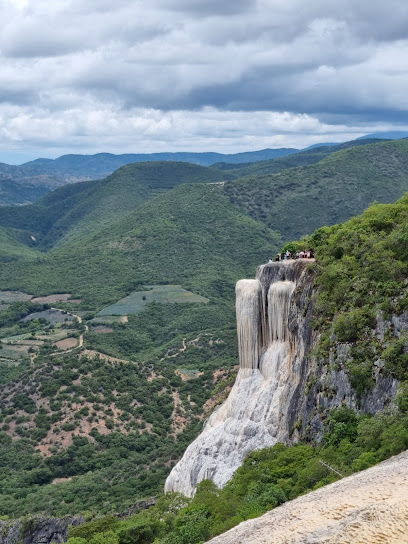
Zona Arqueológica de Mitla
Explore the rich heritage of the Zapotec civilization at Zona Arqueológica de Mitla, a stunning archaeological site in Oaxaca, Mexico.

Plaza de la Danza
Discover the vibrant culture and history of Oaxaca at Plaza de la Danza, a picturesque open-air museum and gathering spot for locals and tourists alike.

Jardín Etnobotánico de Oaxaca
Immerse yourself in the lush landscapes and rich biodiversity of the Jardín Etnobotánico de Oaxaca, a botanical garden that celebrates nature and culture.

Oaxaca Artisan Market
Explore the vibrant Oaxaca Artisan Market, where local craftsmanship and cultural heritage thrive amidst a lively atmosphere filled with unique handmade treasures.

EX CONVENTO CUILAPAM DE GUERRERO
Discover the rich history and breathtaking architecture of Ex Convento Cuilapan de Guerrero, a must-see landmark in Oaxaca.

Basílica de Nuestra Señora de la Soledad
Explore the stunning Basílica de Nuestra Señora de la Soledad, a spiritual and architectural gem in the heart of Oaxaca.

Auditorio Guelaguetza
Discover the Guelaguetza Auditorium in Oaxaca - a vibrant celebration of culture, music, and dance that showcases the heart of Mexico's traditions.

Fuente de las 8 Regiones
Explore the stunning Fuente de las 8 Regiones in Oaxaca, a monument celebrating the rich cultural diversity of this vibrant Mexican state.

Andador Turístico
Discover the heart of Oaxaca at Andador Turístico, a vibrant promenade filled with culture, delicious cuisine, and local artistry.

TEATRO MACEDONIO ALCALÁ
Experience the magic of Teatro Macedonio Alcalá in Oaxaca, where stunning architecture meets captivating performances in the heart of Mexico.

Essential places to dine
Casa Oaxaca el Restaurante
Discover authentic Oaxacan flavors at Casa Oaxaca el Restaurante—where tradition meets innovation in every dish.

Las Quince Letras Restaurante
Experience authentic Oaxacan cuisine at Las Quince Letras Restaurante in Oaxaca de Juárez - a true culinary gem offering rich flavors and warm hospitality.

Los Danzantes
Discover the exquisite flavors of Oaxaca at Los Danzantes, where traditional cuisine meets contemporary elegance in every dish.

Catedral Restaurant
Experience authentic Oaxacan flavors at Catedral Restaurant, where tradition meets taste in every delicious dish.

Restaurant Tierra del Sol
Experience exquisite Oaxacan cuisine at Restaurant Tierra del Sol - where tradition meets modern culinary artistry in an inviting atmosphere.

Zandunga Sabor Istmeño
Experience authentic Oaxacan cuisine at Zandunga Sabor Istmeño – a culinary journey filled with vibrant flavors and rich traditions.

Gozobi Restaurante Bar
Experience authentic Oaxacan flavors at Gozobi Restaurante Bar—where tradition meets modern culinary art in every bite.

Criollo
Discover Criollo in Oaxaca: Where traditional Mexican cuisine meets innovative culinary artistry.

Ancestral Cocina Tradicional
Discover authentic Oaxacan flavors at Ancestral Cocina Tradicional – where every dish tells a story.
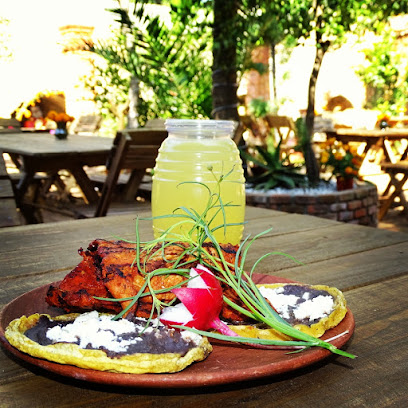
Casa Oaxaca Reforma
Experience authentic Oaxacan cuisine at Casa Oaxaca Reforma, where tradition meets modernity in every delicious dish.

Pitiona
Experience the essence of Oaxacan cuisine at Pitiona, where tradition meets innovation in every delectable dish.

Sabina Sabe
Discover Sabina Sabe: A grill haven offering authentic Mexican flavors amidst Oaxaca's lively atmosphere.

Casa Taviche
Experience authentic Oaxacan flavors at Casa Taviche – where tradition meets modern culinary art in the heart of Mexico.
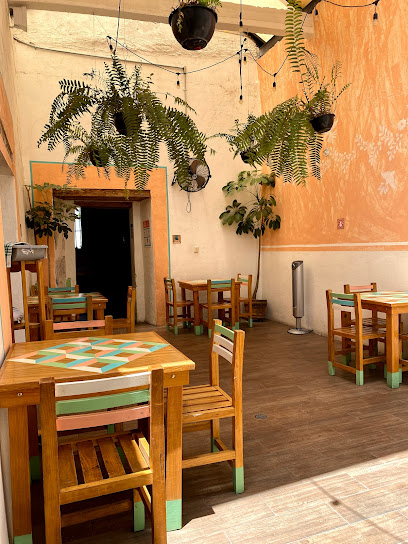
Itanoní
Discover the essence of Oaxacan cuisine at Itanoní, where traditional breakfast meets vibrant local culture.

La Azotea
Experience exceptional Oaxacan cuisine and breathtaking views at La Azotea, one of Oaxaca's premier chophouse restaurants.

Markets, malls and hidden boutiques
Oaxaca Artisan Market
Explore the vibrant Oaxaca Artisan Market, where local craftsmanship and rich culture come together in a colorful and lively atmosphere.

Plaza Mazari
Discover the vibrant retail and dining experience at Plaza Mazari, Oaxaca's premier shopping destination offering local and international brands.

La Cosecha Organic Market
Experience the heart of Oaxacan culture at La Cosecha Organic Market, a treasure trove of organic produce, handicrafts, and authentic Mexican flavors.

La Casa de las Artesanías de Oaxaca
Discover the essence of Oaxacan culture at La Casa de las Artesanías, where exquisite handicrafts and vibrant art come together in a unique shopping experience.

Makedonia
Explore Makedonia Gift Shop, where Oaxacan artistry meets elegant timepieces, creating the perfect shopping experience in the heart of Oaxaca.

Vikers Vintage/Thrift shop
Explore Vikers Vintage Thrift Shop in Oaxaca de Juárez for unique vintage clothing and sustainable fashion treasures.
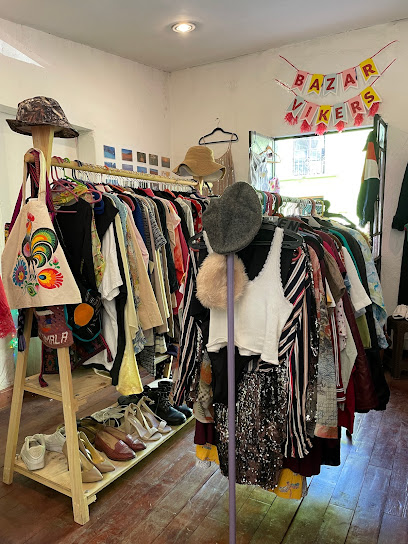
Virmanik Boutique
Explore Virmanik Boutique in Oaxaca for unique gifts, organic beauty products, and stylish clothing, all reflecting local culture and craftsmanship.

El Cuarzo Store (Smoke shop, Tabaqueria, vape, Skate shop, Graffiti shop, Street wear store)
Explore El Cuarzo Store in Oaxaca, your go-to destination for streetwear, skate gear, and a vibrant youth culture atmosphere.

Marchanta
Discover unique women's fashion at Marchanta, a vibrant clothing store in Oaxaca de Juárez, reflecting local culture and contemporary style.

Los Baúles de Juana Cata
Discover the charm of Oaxaca at Los Baúles de Juana Cata, where traditional craftsmanship meets modern fashion in a unique shopping experience.

MEXCHIC
Explore MEXCHIC in Oaxaca, a boutique offering unique clothing and home goods that celebrate local craftsmanship and vibrant culture.

OAXAQUIANDO
Discover the heart of Oaxaca through authentic crafts and souvenirs at Oaxaquiendo, your go-to shop for local artistry and culture.
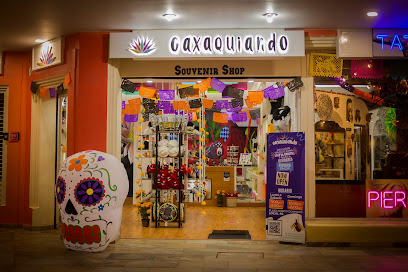
Tienda Q
Explore Tienda Q in Oaxaca for unique artisanal treasures and a taste of local craftsmanship, perfect for memorable souvenirs.

Envolver-t Oaxaca
Explore Envolver-t Oaxaca, a charming gift shop filled with unique local crafts and souvenirs that capture the essence of Oaxacan culture.

Marias Arte & Diseño
Explore Marias Arte & Diseño for unique Oaxacan art, handmade gifts, and a celebration of local craftsmanship in the heart of Oaxaca.

Essential bars & hidden hideouts
La Mezcalerita
Discover the heart of Oaxaca at La Mezcalerita, where mezcal meets authentic Oaxacan cuisine in a vibrant atmosphere.

Txalaparta
Experience the vibrant nightlife of Oaxaca at Txalaparta, where local flavors and a lively atmosphere await you.

Guns & Beers Oaxaca
Experience the vibrant nightlife of Oaxaca at Guns & Beers, where live music, delicious food, and craft beers come together for an unforgettable evening.

Sabina Sabe
Savor the rich flavors of Oaxaca at Sabina Sabe, a grill restaurant offering authentic Mexican dishes in a lively atmosphere.

DESESTRESSE OAXACA, Drinks & Cocktails
Experience the vibrant nightlife of Oaxaca at DESESTRESSE, a cocktail bar serving artisanal drinks and delicious bites in a lively atmosphere.

Selva Oaxaca Cocktail Bar
Discover Selva Oaxaca Cocktail Bar, where tropical vibes meet innovative cocktails in the heart of Oaxaca's vibrant nightlife.

Mezcalería In Situ
Experience the rich culture of mezcal at Mezcalería In Situ, where every sip tells a story in Oaxaca's vibrant bar scene.
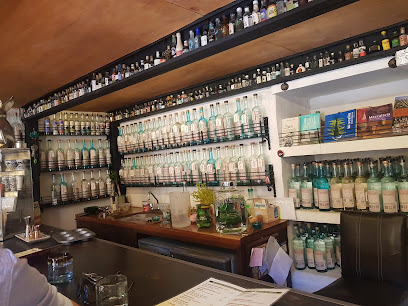
La Santísima Flor de Lúpulo
Experience the heart of Oaxaca's nightlife at La Santísima Flor de Lúpulo, where craft beer meets traditional flavors in a vibrant atmosphere.

ALAMBIQUE-OAXACA, Gastropub Mexicano
Discover the vibrant flavors of Oaxaca at Alambique-Oaxaca, a gastropub offering an unforgettable dining experience with live music and local delicacies.

Los Amantes Mezcalería
Experience the essence of Oaxaca at Los Amantes Mezcalería, where artisanal mezcal and local culture converge in a vibrant setting.

La Mezcaloteca
Unveil the rich flavors of artisanal mezcal at La Mezcaloteca, a vibrant bar in Oaxaca celebrating local culture and heritage.

Passion Bar
Discover the vibrant nightlife of Oaxaca at Passion Bar, where delicious cocktails and a lively atmosphere await every visitor.

Zapotec Mixology Bar
Discover the vibrant flavors of Oaxaca with innovative cocktails at Zapotec Mixology Bar, where tradition meets modern mixology.

El Espacio: Cocktail, Mezcal & Agave Bar
Discover the vibrant cocktails and rich mezcal culture at El Espacio, a must-visit cocktail bar in the heart of Oaxaca, Mexico.

fito's bar
Discover the vibrant ambiance and delightful drinks at Fito's Bar, a must-visit destination in Oaxaca's lively Centro district.
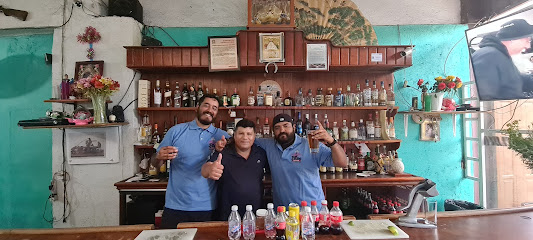
Travel experiences inspired by this city
Explore more travel diariesLocal Phrases
-
- Hello¡Hola!
[O-la] - Goodbye¡Adiós!
[Ah-dee-ose] - YesSí
[See] - NoNo
[No] - Please/You're welcomePor favor/De nada
[Por fa-vor/De na-da] - Thank youGracias
[Gra-cias] - Excuse me/SorryPerdón/Lo siento
[Per-don/Lo see-en-to] - How are you?¿Cómo estás?
[Ko-mo es-tas] - Fine. And you?Bien. ¿Y tú?
[Bee-en. Ee too] - Do you speak English?¿Hablas inglés?
[A-blas in-gles] - I don't understandNo entiendo
[No en-tien-do]
- Hello¡Hola!
-
- I'd like to see the menu, pleaseMe gustaría ver el menú, por favor
[Me gus-ta-ree-a ver el me-noo, por fa-vor] - I don't eat meatNo como carne
[No ko-mo kar-ne] - Cheers!¡Salud!
[Sa-loo-d] - I would like to pay, pleaseMe gustaría pagar, por favor
[Me gus-ta-ree-a pa-gar, por fa-vor]
- I'd like to see the menu, pleaseMe gustaría ver el menú, por favor
-
- Help!¡Ayuda!
[A-yu-da] - Go away!¡Vete!
[Ve-te] - Call the Police!¡Llama a la policía!
[Ya-ma a la po-lee-see-a] - Call a doctor!¡Llama a un doctor!
[Ya-ma a un dok-tor] - I'm lostEstoy perdido
[Es-toy per-di-do] - I'm illEstoy enfermo
[Es-toy en-fer-mo]
- Help!¡Ayuda!
-
- I'd like to buy...Me gustaría comprar...
[Me gus-ta-ree-a kom-prar] - I'm just lookingSólo estoy mirando
[So-lo es-toy mee-ran-do] - How much is it?¿Cuánto cuesta?
[Kwan-to kwe-sta] - That's too expensiveEsto es demasiado caro
[Es-to es de-ma-sia-do ka-ro] - Can you lower the price?¿Puede bajar el precio?
[Pwe-de ba-har el pre-si-o]
- I'd like to buy...Me gustaría comprar...
-
- What time is it?¿Qué hora es?
[Ke o-ra es] - It's one o'clockEs la una
[Es la oo-na] - Half past (10)Y media
[Y me-dee-a] - MorningMañana
[Ma-nya-na] - AfternoonTarde
[Tar-de] - EveningNoche
[No-che] - YesterdayAyer
[A-yer] - TodayHoy
[Oy] - TomorrowMañana
[Ma-nya-na] - 1Uno
[Oo-no] - 2Dos
[Dose] - 3Tres
[Tres] - 4Cuatro
[Kwa-tro] - 5Cinco
[Seen-ko] - 6Seis
[Says] - 7Siete
[Syete] - 8Ocho
[O-cho] - 9Nueve
[Nwe-ve] - 10Diez
[Dee-eth]
- What time is it?¿Qué hora es?
-
- Where's a/the...?¿Dónde está un/el...?
[Don-de es-ta oon/el] - What's the address?¿Cuál es la dirección?
[Kwal es la di-rek-sion] - Can you show me (on the map)?¿Puedes mostrarme (en el mapa)?
[Pwe-des mos-trar-me (en el ma-pa)] - When's the next (bus)?¿Cuándo es el próximo (autobús)?
[Kwan-do es el pro-ksi-mo (au-to-bus)] - A ticket (to ....)Un boleto (a ....)
[Un bo-le-to (a)]
- Where's a/the...?¿Dónde está un/el...?
History of Oaxaca
-
Oaxaca's history dates back thousands of years, with evidence of human habitation as early as 11,000 BCE. The region is particularly notable for the rise of the Zapotec civilization around 500 BCE. The Zapotecs, known for their complex society and impressive architectural achievements, built the ancient city of Monte Albán, which became a major political and cultural center. The city features grand plazas, pyramids, and a remarkable system of terraces and irrigation.
-
Following the decline of the Zapotecs, the Mixtecs rose to prominence in Oaxaca around the 10th century. They were skilled artisans, leaving behind intricate gold jewelry, codices, and pottery. The Mixtecs also took control of Monte Albán and other key sites, integrating their culture with the existing Zapotec heritage. Their influence is still evident in the region's rich tradition of craftsmanship and artistry.
-
The Spanish conquest of Oaxaca began in 1521, led by the adventurer and conquistador Hernán Cortés. The region was incorporated into New Spain, and the Spanish imposed their culture, religion, and social structures on the indigenous populations. Oaxaca City was officially founded in 1532 as Antequera. The Spanish introduced Christianity, building numerous churches and monasteries, which remain significant historical and architectural landmarks today.
-
During the colonial period, Oaxaca became an important center for trade and agriculture, particularly known for its production of cochineal, a red dye derived from insects that was highly valued in European markets. The city evolved architecturally, with the construction of baroque churches, convents, and public buildings. The Santo Domingo de Guzmán Church and its adjacent monastery are prime examples of this period's architectural splendor.
-
Oaxaca played a significant role in Mexico's struggle for independence from Spain, which was achieved in 1821. The region produced several key figures in Mexican history, including Benito Juárez, the first indigenous president of Mexico, who initiated major reforms and fought against foreign intervention. The 19th century was a period of political upheaval and social change, with Oaxaca at the heart of many significant events.
-
The early 20th century saw Oaxaca embroiled in the Mexican Revolution, a complex and multifaceted conflict that began in 1910. The revolution brought profound social and economic changes to the region, with land reforms and shifts in power dynamics. Revolutionary leaders like Emiliano Zapata had a lasting impact on the agrarian landscape of Oaxaca, advocating for the rights of peasants and indigenous communities.
-
In the latter half of the 20th century, Oaxaca underwent a cultural renaissance, celebrating its indigenous heritage and vibrant traditions. The Guelaguetza festival, a major cultural event held annually, showcases the diverse customs, music, dance, and cuisine of Oaxaca's various indigenous groups. The city's historic center, with its colorful colonial buildings and bustling markets, was designated a UNESCO World Heritage Site in 1987, drawing visitors from around the globe.
Oaxaca Essentials
-
Oaxaca is accessible via the Xoxocotlán International Airport (OAX), located approximately 7 kilometers south of the city center. Direct flights are available from major cities in Mexico, such as Mexico City, Guadalajara, and Monterrey. International travelers can connect through Mexico City. Alternatively, long-distance buses from Mexico City's TAPO terminal offer a scenic route to Oaxaca, typically taking around 6 to 7 hours.
-
Within Oaxaca, taxis are a convenient option and can be hailed on the street or booked via apps. The city also has a comprehensive bus network, with routes covering most areas of interest. For a more local experience, consider using colectivos (shared taxis) that operate on fixed routes. Renting a car is an option for those looking to explore the surrounding regions, but be aware of local driving conditions and traffic regulations.
-
The official currency in Oaxaca is the Mexican Peso (MXN). Credit and debit cards are widely accepted in hotels, restaurants, and larger stores. However, it is advisable to carry cash for transactions in smaller establishments and markets. ATMs are readily available throughout the city, but inform your bank of your travel plans to avoid any issues with card transactions.
-
Oaxaca is generally a safe destination for tourists. However, it is wise to take standard precautions, such as avoiding poorly lit areas at night and not displaying valuables openly. While the city center and tourist areas are usually safe, neighborhoods like Colonia Reforma and Santa Rosa Panzacola have higher crime rates. Always stay vigilant and aware of your surroundings.
-
In case of emergency, dial 911 for police, medical, or fire assistance. The main hospitals in Oaxaca, such as Hospital General Dr. Aurelio Valdivieso, provide comprehensive medical services. It is recommended to have travel insurance that covers medical emergencies. Pharmacies are widely available for minor health issues, and many pharmacists speak basic English.
-
Fashion: Do dress modestly, especially when visiting churches and historical sites. Avoid overly revealing clothing. Religion: Do respect local customs, and remove hats and sunglasses when entering religious sites. Public Transport: Do be courteous and give up your seat to elderly passengers. Don’t eat or drink on public transport. Greetings: Do greet people with a handshake or a friendly nod. Use formal titles like 'Señor' or 'Señora'. Eating & Drinking: Do try local dishes and accept food graciously. Don’t refuse hospitality, as it may be considered impolite.
-
To experience Oaxaca like a local, visit the bustling markets such as Mercado Benito Juárez and Mercado 20 de Noviembre to sample traditional foods and crafts. Engage with locals, who are often friendly and willing to share insights about the city's culture and history. Don't miss the Guelaguetza festival if visiting in July, and consider taking a cooking class to learn how to make Oaxacan specialties like mole. Exploring the nearby archaeological sites of Monte Albán and Mitla offers a deeper understanding of the region's rich heritage.
Trending Landmark in Oaxaca
-
Zócalo (Plaza de la Constitución)
-
Mercado 20 de Noviembre
-
Mercado Benito Juárez
-
Zona Arqueológica de Monte Albán
-
Templo de Santo Domingo de Guzmán
-
Plaza de la Danza
-
Jardín Etnobotánico de Oaxaca
-
EX CONVENTO CUILAPAM DE GUERRERO
-
Basílica de Nuestra Señora de la Soledad
-
Fuente de las 8 Regiones
-
Metropolitan Cathedral of Oaxaca
-
Andador Turístico
-
TEATRO MACEDONIO ALCALÁ
-
Museum of Cultures of Oaxaca, Santo Domingo
-
Centro Cultural San Pablo
Nearby Cities to Oaxaca
-
Things To Do in Puerto Escondido
-
Things To Do in Veracruz
-
Things To Do in Puebla
-
Things To Do in Acapulco
-
Things To Do in Taxco
-
Things To Do in Mexico City
-
Things To Do in Chiapas
-
Things To Do in Queretaro
-
Things To Do in San Miguel de Allende
-
Things To Do in Quetzaltenango
-
Things To Do in Chichicastenango
-
Things To Do in Lake Atitlán
-
Things To Do in Panajachel
-
Things To Do in Guanajuato
-
Things To Do in Antigua Guatemala

























